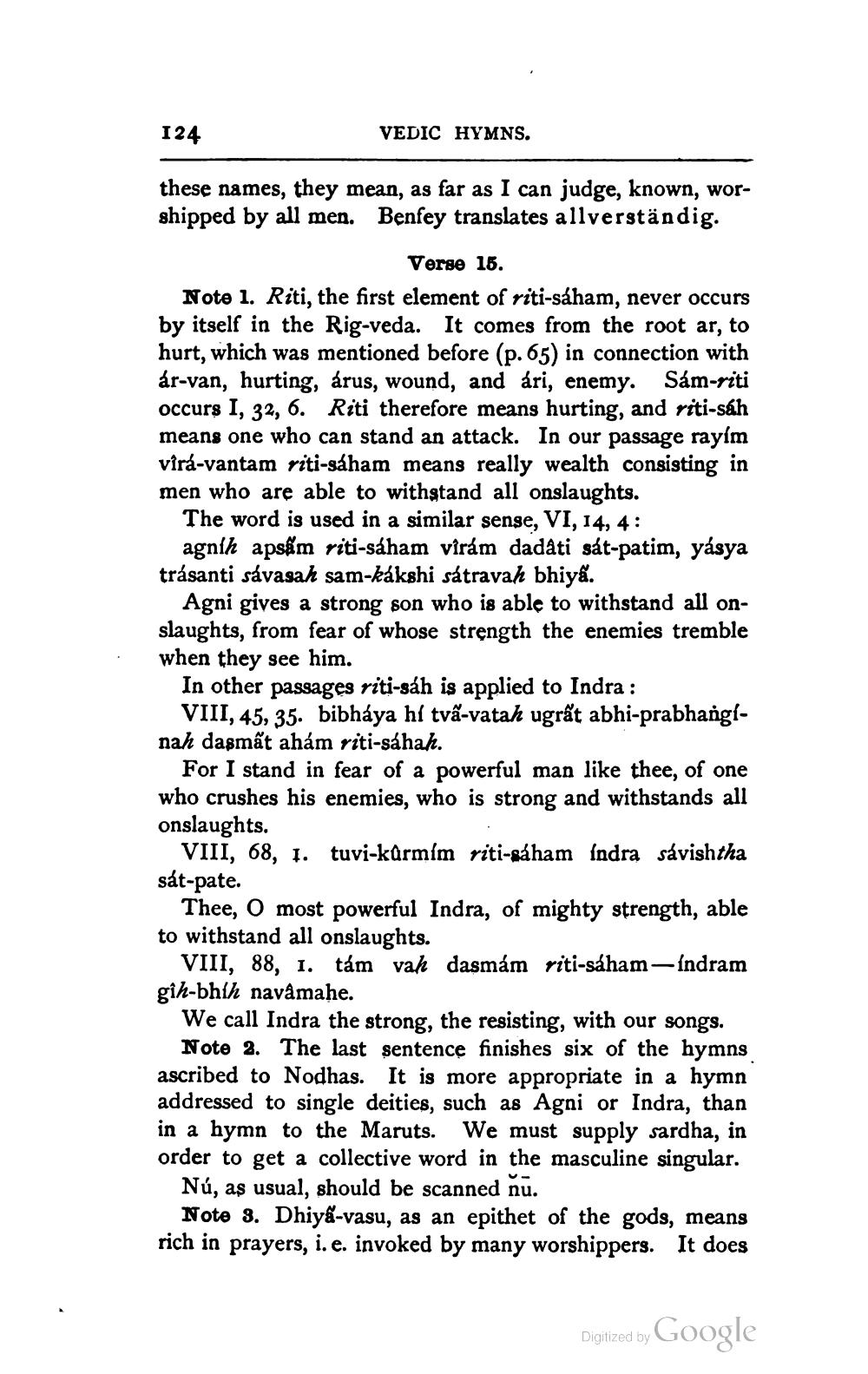________________
124
VEDIC HYMNS.
these names, they mean, as far as I can judge, known, worshipped by all men. Benfey translates allverständig.
Verse 15. Note 1. Riti, the first element of riti-saham, never occurs by itself in the Rig-veda. It comes from the root ar, to hurt, which was mentioned before (p. 65) in connection with ár-van, hurting, árus, wound, and ári, enemy. Sám-riti occurs I, 32, 6. Riti therefore means hurting, and riti-sáh means one who can stand an attack. In our passage rayim virá-vantam riti-saham means really wealth consisting in men who are able to withstand all onslaughts.
The word is used in a similar sense, VI, 14, 4:
agnih apsám riti-saham viram dadati sát-patim, yasya trásanti sávasah sam-kákshi sátravah bhiya.
Agni gives a strong son who is able to withstand all onslaughts, from fear of whose strength the enemies tremble when they see him.
In other passages riti-sáh is applied to Indra :
VIII, 45, 35. bibhaya hí tvã-vatah ugrất abhi-prabhanginah dasmất ahám riti-sáhah.
For I stand in fear of a powerful man like thee, of one who crushes his enemies, who is strong and withstands all onslaughts.
VIII, 68, 1. tuvi-kůrmim riti-saham Indra sávishtha sát-pate.
Thee, O most powerful Indra, of mighty strength, able to withstand all onslaughts.
VIII, 88, 1. tám vah dasmám riti-saham-Indram gih-bhsh navamahe.
We call Indra the strong, the resisting, with our songs.
Note 2. The last sentence finishes six of the hymns ascribed to Nodhas. It is more appropriate in a hymn addressed to single deities, such as Agni or Indra, than in a hymn to the Maruts. We must supply sardha, in order to get a collective word in the masculine singular.
Nú, as usual, should be scanned nu.
Note 3. Dhiya-vasu, as an epithet of the gods, means rich in prayers, i.e. invoked by many worshippers. It does
Digitized by
Digitized by Google




